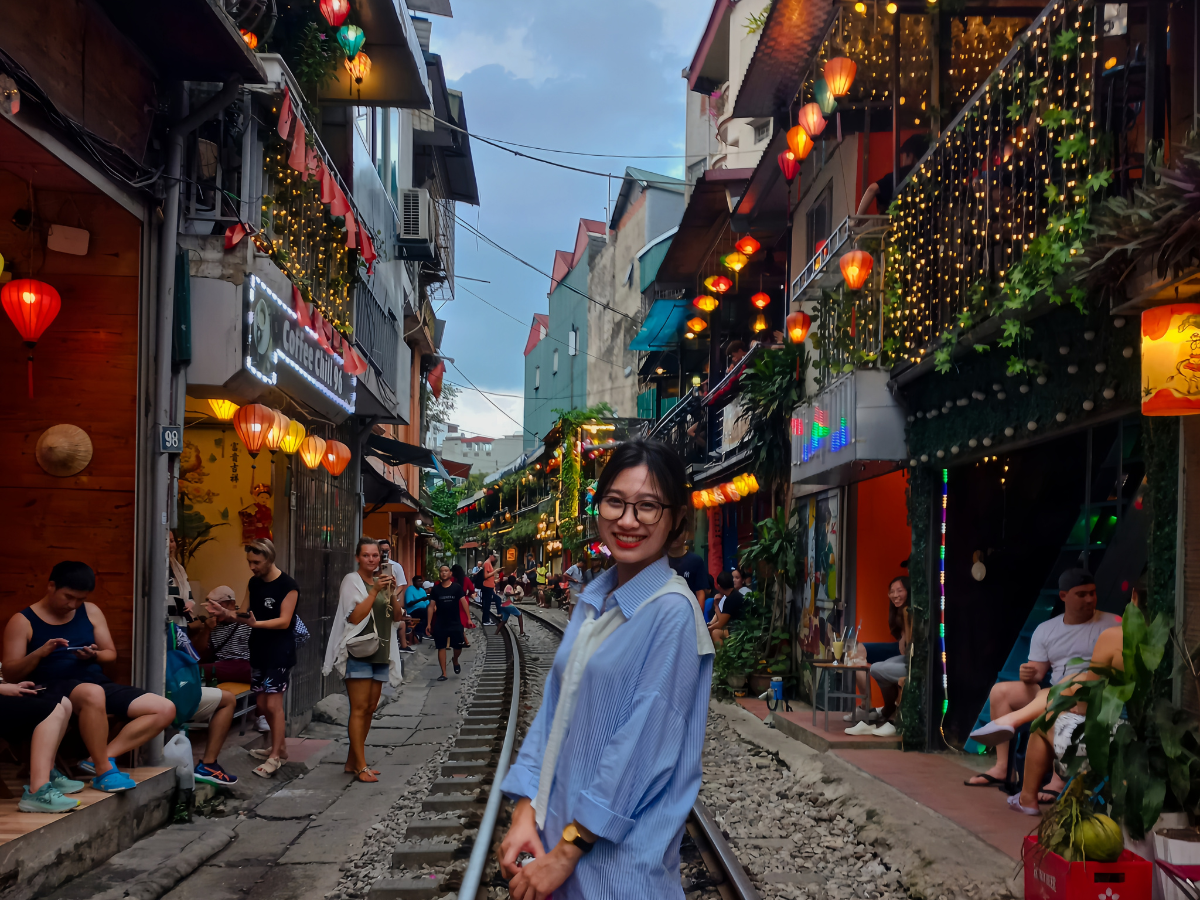
Photos of tourists at Hanoi train street cafe
Situated in the northern part of Vietnam, Hanoi is nestled along the banks of the Red River. The city boasts a history that spans over a thousand years, making it one of the oldest capitals in Southeast Asia. Steeped in tradition, Hanoi has preserved its heritage through its well-preserved colonial architecture, ancient temples, and narrow winding streets of the Old Quarter.
One of the highlights of Hanoi is its culinary delights. The city is renowned for its vibrant street food culture, where local vendors offer an array of tantalizing dishes such as pho (Vietnamese noodle soup), bun cha (grilled pork with noodles), and banh mi (Vietnamese baguette sandwich). Exploring the narrow alleyways of the Old Quarter reveals a treasure trove of flavors and aromas, inviting visitors to indulge in the authentic tastes of Vietnamese cuisine.
Beyond its cultural and culinary offerings, Hanoi provides a gateway to breathtaking natural wonders. The city is a convenient starting point for exploring the iconic Halong Bay, a UNESCO World Heritage site known for its emerald waters and limestone karsts. Additionally, nearby destinations like Ninh Binh and Sapa offer stunning landscapes of rice terraces, majestic mountains, and ethnic minority communities.
Hanoi, with its unique blend of history, culture, and natural beauty, captures the hearts of travelers from around the world. Whether you’re wandering the ancient streets of the Old Quarter, savoring the flavors of Vietnamese cuisine, or immersing yourself in the city’s vibrant arts scene, Hanoi promises an unforgettable experience that will leave you enchanted and wanting to return for more.

In this guide, I have provided a description of Hanoi and its surrounding areas, including popular attractions, activities, accommodation, dining options, transportation, and an annotated map of the city. Hanoi can be visited throughout the year, but in my opinion, the best time to visit is from September to October when the weather is pleasant and the city is bustling with cultural events. Hanoi offers a wide range of attractions such as Hoan Kiem Lake, the Old Quarter, and the Temple of Literature. To explore more fascinating destinations in the region, refer to the Related Posts section.
Hanoi, the vibrant capital city of Vietnam, experiences two main seasons – rainy and dry – with variations that simulate the four seasons. Each season offers a unique charm and ambiance to explore this captivating city. In this blog, we’ll take you on a seasonal journey through Hanoi, highlighting the best time to visit and what to expect during each season.
Spring – Embracing New Beginnings (February-April):
As the winter fades away, Hanoi welcomes the enchanting season of spring. The weather is mild and pleasant, with temperatures ranging from 15-20°C (59-68°F). February to March offers clear skies, perfect for outdoor activities and sightseeing. However, do note that April brings occasional showers. Springtime in Hanoi may coincide with Tet, the Vietnamese New Year, adding a vibrant cultural touch to the city. Explore the festive atmosphere and immerse yourself in the local traditions during this time.
Summer – Vibrant Energy and Tropical Showers (May-August):
Hanoi’s summer brings warmth and humidity, with an average temperature of around 32°C (90°F). The city buzzes with activity, and its lively streets are filled with locals and tourists alike. Embrace the energy and explore the city’s vibrant markets, street food stalls, and cultural sites. Keep in mind that this is the rainy season, particularly in July and August, so be prepared for occasional showers. Despite the rain, Hanoi’s charm remains intact, offering unique experiences even during this season.
Fall – A Tapestry of Colors (September-November):
As the scorching summer heat subsides, Hanoi dons its autumn attire. Fall is considered one of the best times to visit this captivating city. The weather is mild and pleasant, with average temperatures around 25°C (77°F). September brings a gradual change, with clearer skies and comfortable temperatures. By November, Hanoi is enveloped in a picturesque landscape of golden-yellow leaves. Take leisurely walks around Hoan Kiem Lake, adorned with stunning tree-lined boulevards, and immerse yourself in the romantic atmosphere of autumn in Hanoi.
Winter: Winter: the weather will be cold (December – January)
Contrary to expectations, winters in Hanoi can be surprisingly cold for a Southeast Asian country. The average temperature hovers around 17°C (63°F) and can even drop below 10°C (50°F). With high humidity, wind chill, and limited building insulation, the cold can feel more intense. If you plan to visit Hanoi during winter, make sure to dress appropriately to stay warm.
I’ve had the opportunity to visit Hanoi twice, once in mid-April and more recently in early September. During my visit in April, I was fortunate to experience dry weather without any rainfall. However, in September, I did encounter intermittent showers. April was a delightful time to explore the city, but I believe November and March would offer even more favorable conditions.
Hanoi offers a delightful experience throughout the year, with each season painting a unique canvas for visitors to explore. Spring showcases the vibrancy of new beginnings, while summer exudes energetic street life and tropical showers. However, it is during the enchanting fall season when Hanoi truly shines, with mild weather, clear skies, and the city adorned in autumn hues. Choose the season that resonates with you and embarks on a seasonal journey through Hanoi, discovering its rich history, vibrant culture, and warm hospitality.

Motorbike: Renting a motorbike in Hanoi is very simple. You can contact the hotel or call the car rental service directly. The price of a car is about 100,000 – 150,000 VND/day.
Taxi: For comfortable travel, you can choose to travel by taxi. Popular taxi companies in Hanoi are Mai Linh (Tel: 024.38.222.666), Taxi Group (Tel: 024.38.26.26.26), V20 (Tel: 024.38.20.20.20)
Cyclo: A typical image of the old town is the cyclo which is still kept for tourism. You can easily catch a cyclo in the old town, and walk around the small streets while listening to interesting stories from the cyclo driver.
Tram: Another interesting way to visit the old town is the tram. Tickets are sold at the Hoan Kiem lakeside area for 15,000 VND / 15-minute trip
3. Best areas to stay in Ha Noi
If you’re visiting Hanoi for the first time, I would highly recommend staying in the Old Quarter, located in the Hoan Kiem district. It is situated in the heart of the tourist area and offers convenient access to many of the city’s top attractions. Here are some of the most convenient areas to stay in Hanoi:
The Old Quarter, located in Hoan Kiem district, is an excellent choice for accommodation due to its central location and proximity to major tourist attractions. This vibrant neighborhood is characterized by its narrow streets bustling with shops, markets, and local eateries, providing a true taste of Hanoi’s bustling atmosphere. Within walking distance, you’ll discover iconic landmarks such as Hoan Kiem Lake, a picturesque spot in the heart of the city, and the grand Hanoi Opera House, showcasing the city’s rich cultural heritage.
For those seeking a blend of history and modern amenities, Ba Dinh is another popular area to consider. Home to significant landmarks such as the Ho Chi Minh Mausoleum, Presidential Palace, and One Pillar Pagoda, Ba Dinh offers a glimpse into Vietnam’s past. This district seamlessly combines historical sites with convenient access to contemporary facilities, ensuring a culturally enriching and convenient stay.
If you prefer a more serene environment away from the bustling city center, Tay Ho is an ideal choice. Located by the scenic West Lake, Tay Ho offers breathtaking lakeside views and a peaceful ambiance. This area is known for its luxury hotels and upscale restaurants, providing a tranquil retreat while still being within reach of Hanoi’s attractions. Whether you want to take a leisurely stroll along the lake or indulge in fine dining experiences, Tay Ho offers a quieter and more relaxing stay option.
However I recommend you to stay at the hotel in the old town because it is very convenient for transportation, communication and service. If you know the choice, there will be homestays, 3-star hotels from 10$ to 30$ a room or B&V with suitable prices for your travel convenience in Hanoi.
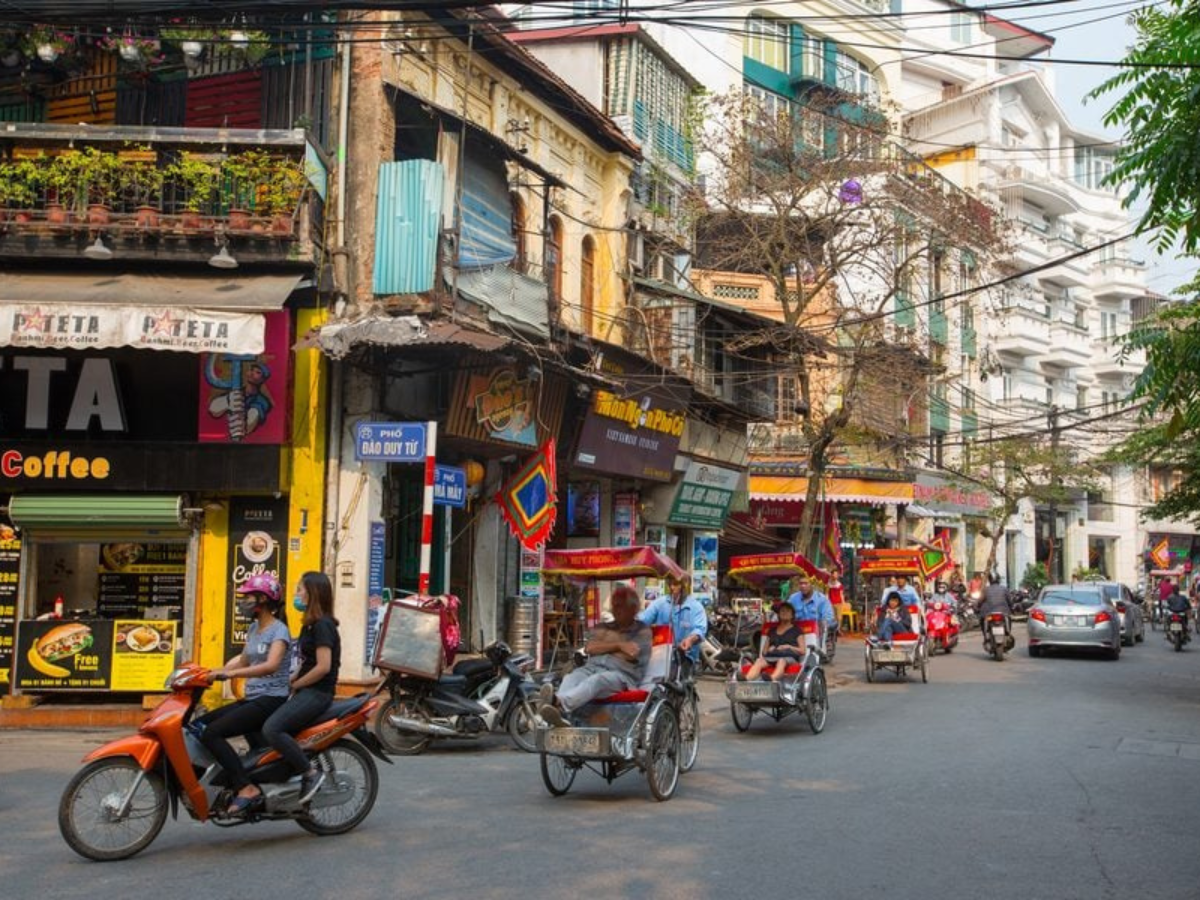
Ha Noi’s old quater
4. Where to exchange currency
The unit of currency in Vietnam is the Vietnamese Dong (VND). The best places to exchange foreign currency are at banks and gold/jewelry shops.
We have exchanged currency at gold shops and a bank, and the rates were excellent at both places. I have read that you can also exchange currency at hotels and some restaurants, but the rates are generally not as good. The same applies to the airport. If you will be arriving by plane and need to exchange currency, it is advisable to exchange a small amount at the airport, just enough to get you to your hotel, and exchange the rest in the city.
However, when you change money at the bank, it will take a long time and the procedure is many times, so I recommend going to the tourist offices in the old town to save time.
Thanks to the recommendation of tourists, I changed money at two streets of Ha Trung and Vietnamdailytourist tourist office. Both are in the old town and both have great prices.
If you’d rather not bring too much foreign currency with you, then an alternative would be to withdraw VND from an ATM. It’s more convenient and the rates are comparable. Just be sure to let your local bank know that you intend to use your ATM card overseas so you don’t run into any issues. In my experience, my ATM card works in some machines but not in others.
When traveling to Vietnam, it is a common practice for tourists to purchase local SIM cards to stay connected during their visit. Buying a SIM card in Vietnam is relatively easy and convenient. There are several mobile network providers to choose from, such as Viettel, Vinaphone, and Mobifone, which offer various data and calling packages to suit different needs.
To purchase a SIM card, tourists can visit official stores or authorized retailers of the network providers. These stores can be found in major cities, airports, and popular tourist areas.
Travel sim from 5 to 10 GB 1 day used for 1 month at all locations in Vietnam from HN to SG,… good signal. If you buy a local sim, the network will be weak and not suitable for travelers Having a local SIM card in Vietnam provides several benefits for travelers. It allows you to make local calls, access the internet, use navigation apps, and stay connected with your friends and family back home. Additionally, having a local number can be useful for booking services, making reservations, and staying in touch with local contacts.
However, buying a network sim at the airport is much more expensive than the market price of 16$. You should go to tourist offices in the old town to buy it for only 7$. There is no need for procedures such as passport or paperwork to register for a network sim card because here we will help you do it.
A reputable sim address that can support you: Vietnamdailytourist

Network sim
6. Laundry services for tourists
When traveling to Vietnam, the demand for laundry service of tourists is increasing. With the convenience and reliability of laundry service, travelers can save time and enjoy their vacation in comfort. For travelers staying in hotels or motels, having reliable and quality laundry service is an important factor.
Thanks to the laundry service, travelers can feel comfortable and confident when traveling and exploring new places without having to worry about laundry. Professional and convenient laundry service helps travelers save time and enjoy more important activities in the trip.
You do not need to worry because when you are in the old town there are many laundry services and usually tourists will go to small tourist offices around here to use this service. The price is only from 30,000 VND to 50,000 VND / 1 kg
7. Best places to visit Ha Noi
Locations near the city center
Concentrating in the central area are places not to be missed when traveling to Hanoi, so you don’t have to go far to ‘conquer’ quite a lot of capital!
Hoan Kiem lake
Located in the heart of the capital is Hoan Kiem Lake – a lake associated with an important historical story of the capital. Around Hoan Kiem Lake is also a diverse historical architectural complex, becoming a place not to be missed for anyone traveling to Hanoi.
Monuments in the Hoan Kiem Lake area: Turtle Tower, Ngoc Son Temple, The Huc Bridge, Pen Tower, Dai Nghien, Hoa Phong Tower…

Hoan Kiem Lake in Ha Noi
The Old Quarter
The “36 Streets” can be considered the epitome of Hanoi’s reputation. Originating as a residential area outside the imperial citadel, this bustling district has thrived for centuries with its artisanal crafts and vibrant trading activities.
Stepping into the Old Quarter today, you can still immerse yourself in its ancient charm, adorned with the time-worn beauty of low-roofed houses, tiled roofs, and moss-covered walls.
Places to visit in the old quarter: Bach Ma temple, 87 Ma May ancient house, O Quan Chuong, and of course indispensable culinary ‘treasure’ here.

Old quater
Dong Xuan Market
Just like how Saigon has Ben Thanh Market, Hanoi boasts its own vibrant marketplace, Dong Xuan Market. Steeped in history since the 19th century, Dong Xuan Market continues to reign as the largest wholesale market in the Northern region. However, as a tourist seeking souvenirs and local treasures, I discovered that this bustling market also caters to retail shoppers, offering a wide array of items such as fashion, accessories, home appliances, and more.
Address: The market is located right in the old town area, you can easily walk from there to visit the market
Opening hours: 8:00 – 18:00
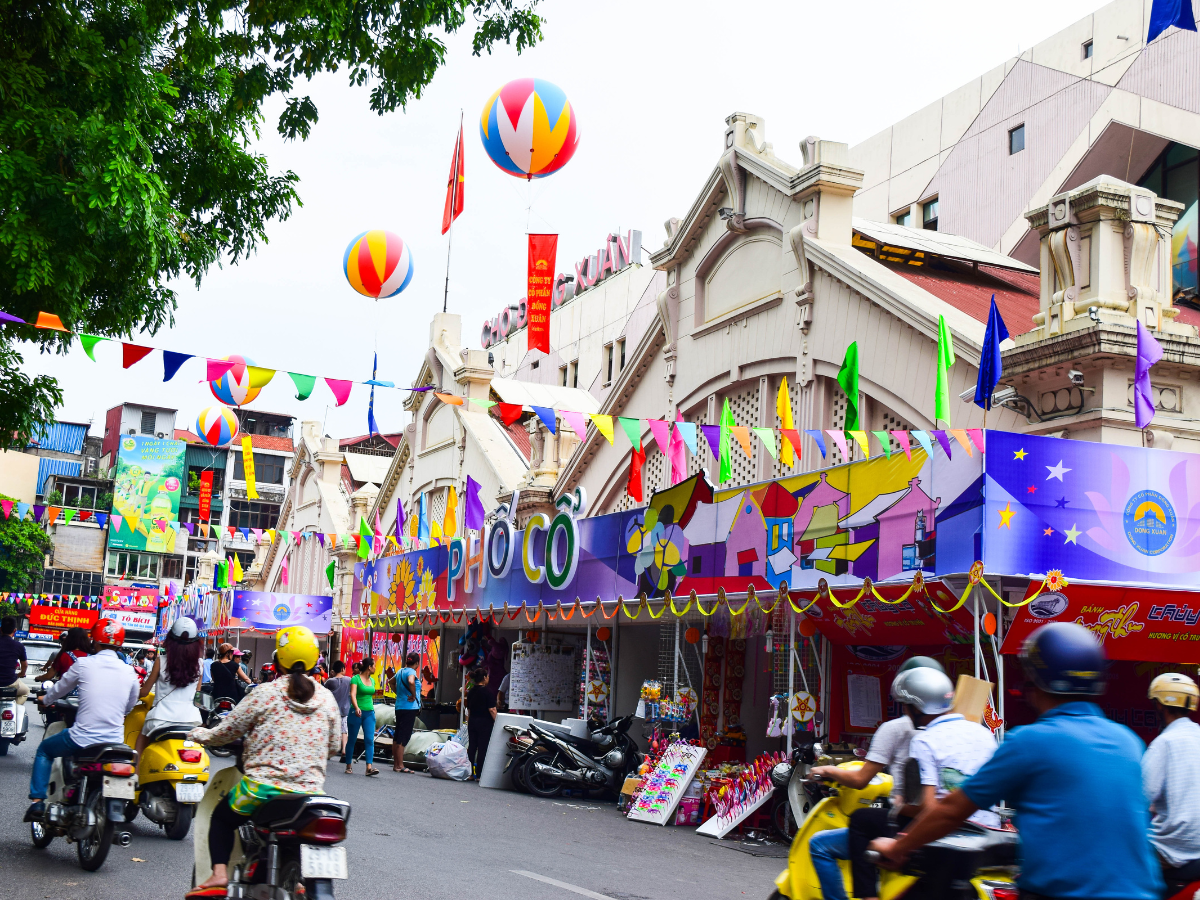
Dong Xuan Market
Opera House
The magnificent Hanoi Opera House stands as a testament to the French influence on the city’s architecture. Constructed with inspiration from the renowned Opera Garnier in Paris, this grand establishment was envisioned as a cultural and artistic hub during the colonial era. Today, the Hanoi Opera House continues to captivate visitors with its stunning façade and plays a significant role in promoting the performing arts in the city.
 Ha Noi’s opera house
Ha Noi’s opera house
St. Joseph’s Cathedral
Located in the bustling Old Town area, St. Joseph’s Cathedral is a prominent landmark that is easy to spot. With its striking Gothic architecture and weathered limestone walls, the cathedral exudes a timeless charm, adding an air of antiquity to its surroundings. The cathedral stands as a testament to Hanoi’s rich history and serves as a spiritual haven for both locals and visitors alike.

St. Joseph’s Cathedral, Hanoi
Ba Dinh Square – Uncle Ho’s Mausoleum
Situated in the heart of the capital, Ba Dinh Square holds immense historical significance. It was on this hallowed ground that Uncle Ho, revered as the father of the nation, proclaimed Vietnam’s Declaration of Independence. Today, Ba Dinh Square is home to Uncle Ho’s mausoleum, serving as a solemn tribute to his enduring legacy and unwavering gratitude. This iconic site stands as a poignant reminder of Vietnam’s struggle for independence and the profound impact of Uncle Ho’s leadership.
The campus behind the mausoleum is the Relic of the Presidential Palace – where Uncle used to live and work in the 1960s. There are houses on stilts, fish ponds, and rustic gardens, allowing visitors to understand more about Uncle Ho’s simple life. during his life.

Uncle’s mausoleum
One Pillar Pagoda
In a city adorned with ancient temples, the One Pillar Pagoda stands out as a revered symbol of Hanoi. As the largest Buddhist center in Vietnam, Hanoi boasts a rich spiritual heritage, and the One Pillar Pagoda holds a special place among its sacred sites. This architectural marvel, nestled within the grounds of Dien Huu Tu, features a compact worship space meticulously constructed atop a stone pillar rising from a tranquil lotus lake. Devotees come here to pay homage to Quan The Am Buddha, experiencing a sense of serenity and spiritual connection in this unique and captivating sanctuary.

One pagoda
Imperial Citadel of Thang Long
Hanoi, having served as the capital during numerous feudal dynasties, proudly showcases its historical legacy through the magnificent Imperial Citadel of Thang Long. This sprawling archaeological complex spans over 140 hectares and bears witness to the city’s rich heritage across multiple dynasties. With its grandeur and significance, the Imperial Citadel stands as a testament to the city’s illustrious past, inviting visitors to explore its vast grounds and unravel the captivating stories woven within its ancient walls.
Over time and war, many vestiges are still preserved and are continuing to be restored, in order to maintain the typical space of the old feudal palace and preserve important relics of the country’s history.
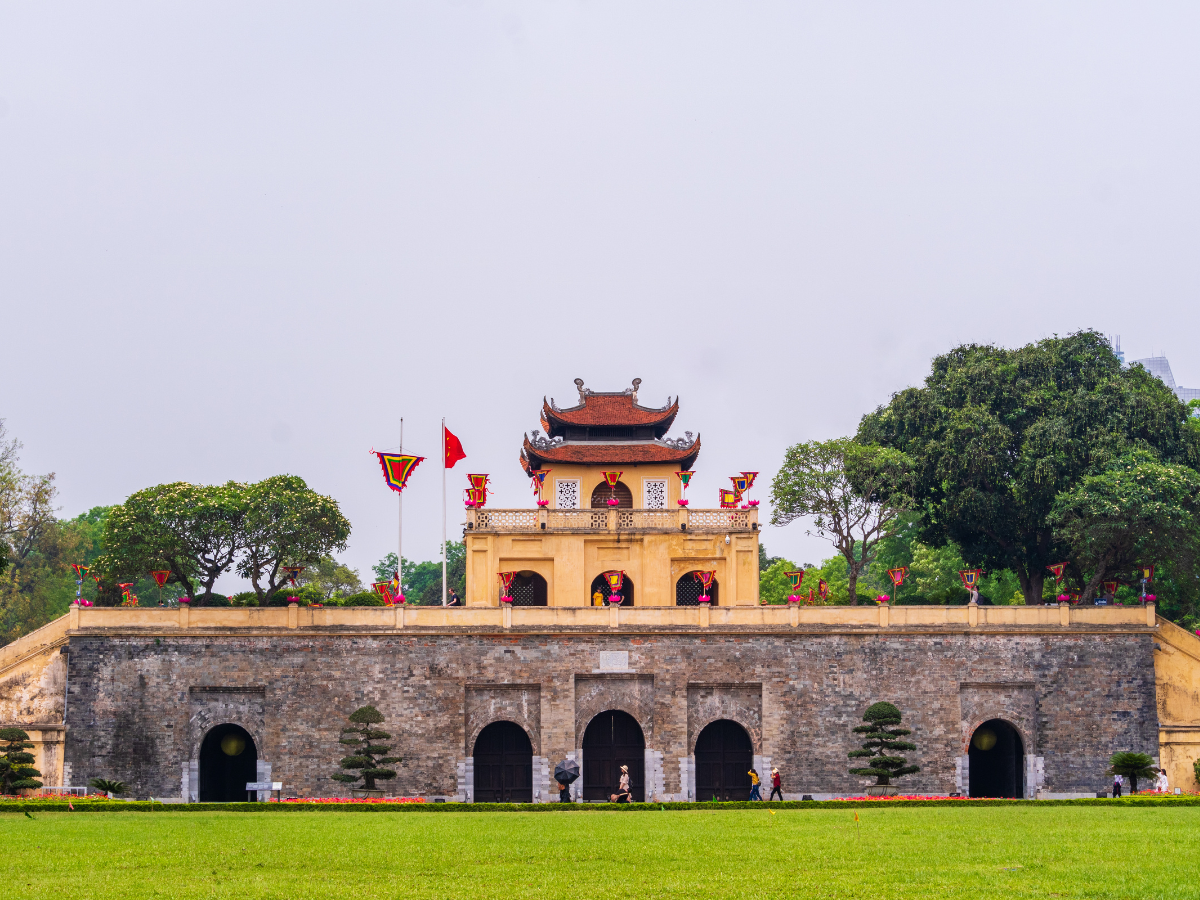
Imperial Citadel of Thang Long
Quoc Tu Giam Temple
Built-in the 11th century, Van Mieu – Quoc Tu Giam consists of two main works. One is the Temple of Literature, a place to worship the sages and saints of Confucianism. The second is Quoc Tu Giam, considered as the first university of our country, initially for the children of kings and aristocrats, then extended to commoners with more intelligence than people.
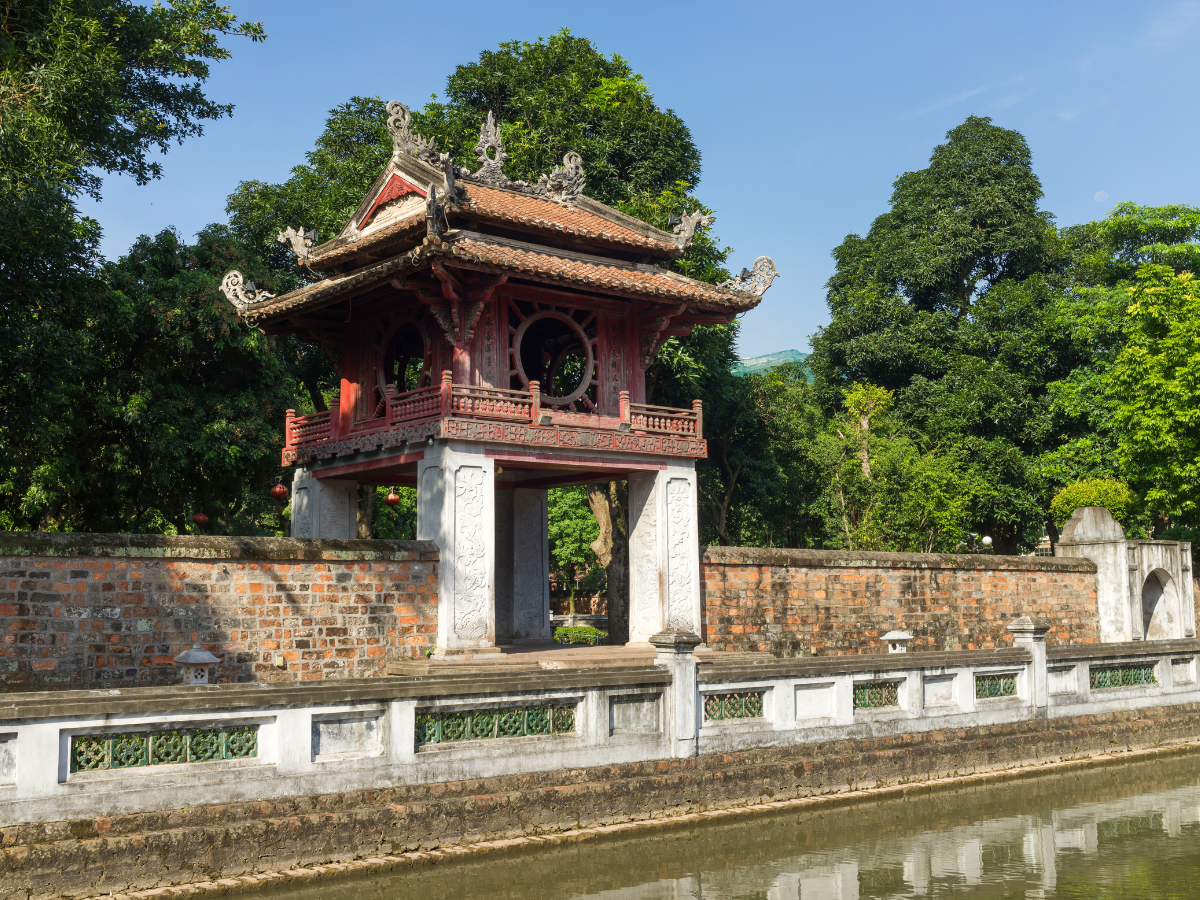
Quoc Tu Giam Temple
West Lake
No exploration of Hanoi would be complete without a visit to the enchanting West Lake, often referred to as the “Lake of the Returned Sword.” It is an integral part of the city’s cultural fabric and offers a quintessential Hanoi experience brimming with cultural discoveries. With its serene waters and picturesque surroundings, West Lake beckons travelers seeking an authentic taste of the capital’s essence. Embark on a journey of cultural immersion and embrace the captivating allure of West Lake, as it unveils its hidden gems and reveals the soul of Hanoi.

West lake
Ta Hien Street
Listing Hanoi travel experiences without Tay Ta Hien Street would be a big omission. If you want to experience the rhythm of young people in the capital, or the atmosphere of Hanoi at night, make a visit to Ta Hien immediately.
Here, the restaurant only needs a few stools and tables to be displayed along the sidewalk and on both sides of the road. Coming to Ta Hien, there is no need to be fussy, just a glass of lemon tea, a glass of beer, and a few snacks are enough for the story through the night.

Ta Hien Street
8. Food and Drink
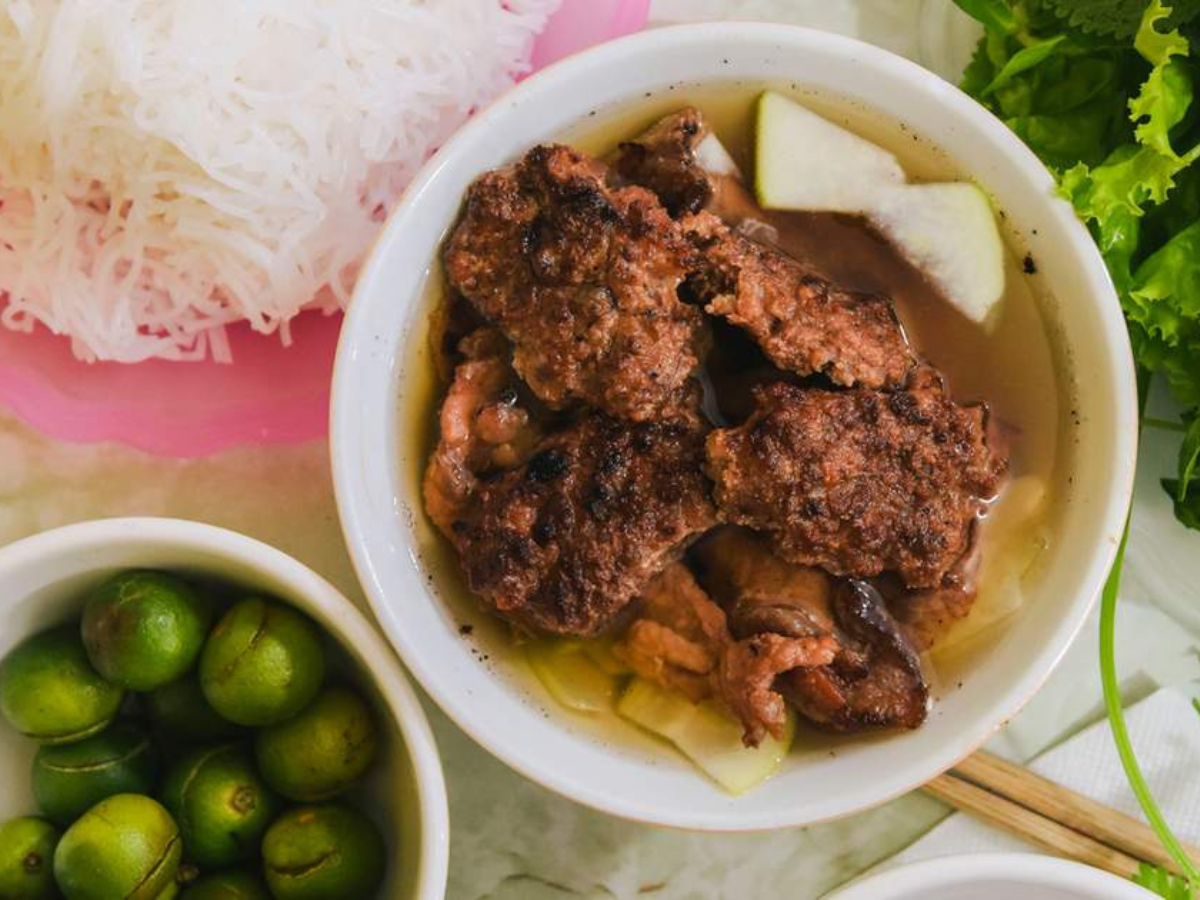
Enjoy Hanoi cuisine
Here is a list of famous and must-try food and drinks in Hanoi:
Pho: The most iconic and famous Vietnamese dish, Hanoi’s pho is known for its sweet and savory broth made from simmered bone and chicken or beef, served with soft and silky rice noodles, and garnished with herbs, onions, and lime.
Bun Cha: A traditional Hanoi dish consisting of grilled pork patties served in a sweet and sour fish sauce broth, accompanied by vermicelli noodles, fresh herbs, and pickled vegetables.
Banh Mi: Vietnamese baguette with a crispy crust and soft interior, often filled with pate (grilled meat or pate) or trung (fried egg).
Nem Ran: Hanoi’s version of fried spring rolls, which are delicate and filled with ground pork, shrimp, wood ear mushrooms, and aromatic herbs, fried until crispy and served with sweet and sour dipping sauce.
Banh Cuon: Thin rice noodle rolls filled with minced pork, shrimp, or mushrooms. Banh Cuon is typically served with a sweet and sour dipping sauce and fresh herbs.
Cha Ca La Vong: A famous Hanoi specialty, Cha Ca La Vong is made with grilled and fragrant turmeric-marinated fish, served with vermicelli noodles, fresh herbs, fried shallots, and various spices.
Iced Tea: A popular and refreshing drink, iced tea is made from fresh tea leaves and served over ice, often sweetened with sugar or honey.
Egg Coffee: A unique Hanoi specialty, egg coffee features a layer of creamy egg custard on top of strong black coffee. It is a sweet and distinctive beverage.
Bia Hoi: Hanoi’s fresh beer, Bia Hoi is a light and low-alcohol draft beer that is popular among locals and tourists alike. It is best enjoyed at street-side establishments.
Che: A Vietnamese sweet dessert soup, Che comes in various flavors and textures, often made with beans, fruits, jellies, and coconut milk.
When in Hanoi, don’t miss the opportunity to try these delicious and authentic dishes, as they are an integral part of the city’s culinary heritage.
Chill out at the railway: There’s a railway line that runs right through a residential neighborhood of Hanoi with just a meter or so of space on each side. Several times a day, a train rushes past within arm’s length of all the houses.
Seeing this is quite the thrill!
Some enterprising locals took note and opened several tiny cafes right along the railway, creating a wonderful atmosphere around the tracks.
There were some rumors the local authorities might close the whole thing, but when the cafes agreed to keep any chairs or people off the tracks, this odd attraction was allowed to continue.
9. More tips for Ha Noi
10. Exciting side trips from Ha Noi
Ha Long Bay cruise
Located approximately three hours east of Hanoi, Ha Long Bay is a captivating UNESCO World Heritage Site and a renowned tourist destination in Vietnam. With its mesmerizing jade green waters and around 2,000 limestone islets, Ha Long Bay offers a breathtaking natural landscape. While day trips to Ha Long Bay are available, I highly recommend experiencing the bay’s true essence by opting for an overnight cruise. If you have ample time in Hanoi, embarking on a cruise in Ha Long Bay is an absolute must. It promises an unforgettable journey filled with awe-inspiring beauty and lasting memories.

Ha Long Bay
Sapa
Nestled in Lao Cai Province, approximately 5 hours northwest of Hanoi, lies the picturesque mountain town of Sapa. Renowned for its breathtaking trekking routes and captivating rice terraces, Sapa is a beloved destination for travelers seeking a taste of the stunning natural landscapes in northern Vietnam.
For those who enjoy independent adventures, our comprehensive travel guide to Sapa provides valuable insights to plan your own trekking trip. Discover the hidden gems of Sapa as you embark on invigorating hikes through lush mountains and immerse yourself in the vibrant cultures of the local ethnic minority communities. Don’t miss the chance to witness the terraced fields, a testament to the local farmers’ ingenuity and their harmonious relationship with nature.
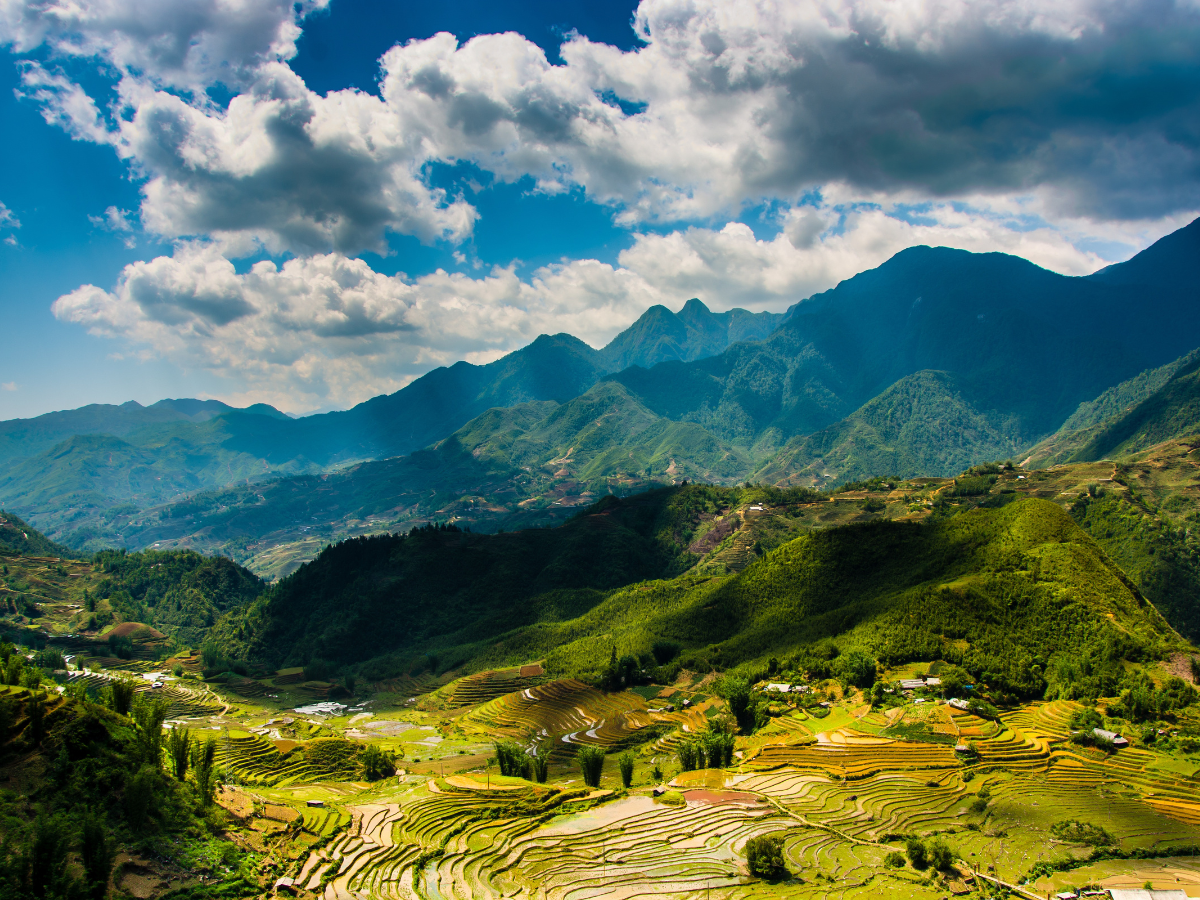
Sapa
Ninh Binh
Northern Vietnam is known for its impressive landscape of towering limestone karsts. With several days to fill in Hanoi go on this day trip to Hoa Lu and Tam Coc in Ninh Binh Province. About two hours south of Hanoi, highlights include a visit to King Dinh Temple and a boat ride along the Hoang Long River surrounded by rice paddy fields and limestone mountains on all sides.
Ninh Bình offers a serene escape from the bustling city life, allowing you to reconnect with nature and immerse yourself in the timeless beauty of Vietnam’s countryside. Prepare to be captivated by the tranquility, natural wonders, and rich cultural tapestry that await you in this enchanting destination.

Ninh Bình
Da Nang – Hoi An
Nestled along the central coast of Vietnam, the city of Da Nang captivates visitors with its unique blend of cultural heritage, natural wonders, and a serene coastal ambiance. With its pristine beaches, lush mountains, and a vibrant cityscape, Da Nang offers a perfect balance between relaxation and exploration.
For history enthusiasts, a visit to the ancient town of Hoi An is a must. Just a short drive from Da Nang this UNESCO World Heritage site takes you back in time with its well-preserved architecture, narrow cobblestone streets, and centuries-old temples.
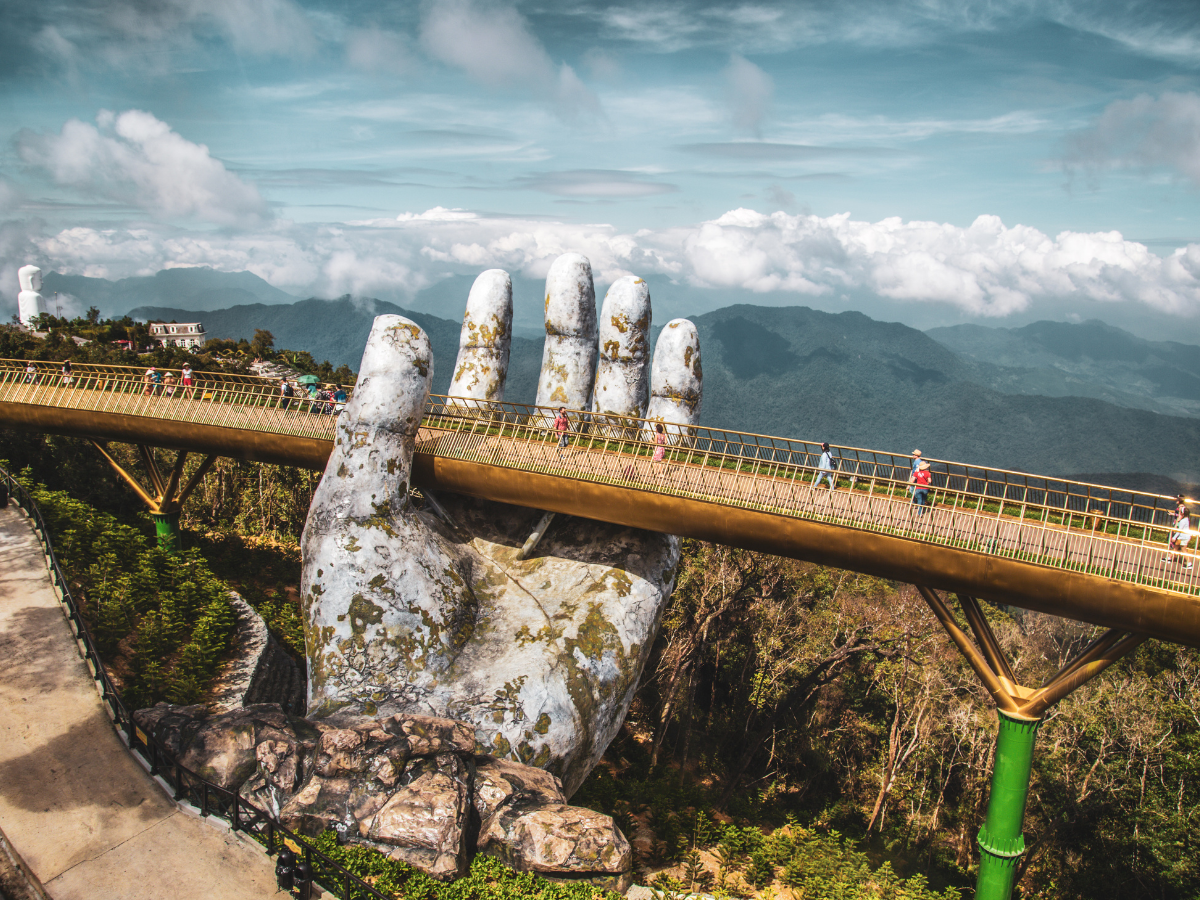
Golden Bridge
And there are many tours starting from Hanoi such as Ha Giang, Pu Luong, Mai Chau, Hue, Ho Chi Minh City,…
You can check out the tours on this website
Hope the information that I have shared will be useful to you. If you have any questions or comments, please leave them in the comments section below.
Thank you for reading and I wish you an enjoyable and fulfilling trip in Hanoi!
